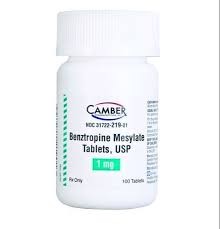A nurse is preparing to administer benztropine 2 mg IM every 12 hr to a client who is experiencing an extrapyramidal reaction. Available is benztropine 1 mg/mL for injection. How many ml should the nurse administer per dose? (Round the answer to the nearest whole number. Use a leading zero if it applies. Do not use a trailing zero.)
The Correct Answer is ["2"]
The nurse is preparing to administer benztropine 2 mg IM every 12 hours. The concentration of the available benztropine is 1 mg/mL.
To calculate the volume (mL) of the medication needed for the prescribed dose, you can use the formula:
Volume (mL) = Dose (mg) / Concentration (mg/mL)
Plugging in the values:
Volume (mL) = 2 mg / 1 mg/mL = 2 mL
So, the nurse should administer 2 mL of benztropine 1 mg/mL for each dose. Since we're looking for a whole number, we round to the nearest whole number, which is 2 mL.

Nursing Test Bank
Naxlex Comprehensive Predictor Exams
Related Questions
Correct Answer is C
Explanation
A. Brief Patient Health Questionnaire (Brief PHQ):
The Brief PHQ is a screening tool used to assess symptoms of depression. While it may be relevant to assess mood and emotional well-being, it is not specific to evaluating cognitive functioning or cognitive disorders.
B. Abnormal Involuntary Movements Scale (AIMS):
The AIMS is used to assess involuntary movements, particularly in individuals taking antipsychotic medications. It is not directly related to assessing cognitive disorders.
C,. Mental status examination (MSE)
Explanation:
When admitting an older adult client with a suspected cognitive disorder, including a mental status examination (MSE) as part of the assessment is crucial. The MSE is a structured assessment of a client's current cognitive functioning, emotional state, and thought processes. It helps to evaluate memory, attention, language, perception, orientation, mood, and other cognitive and emotional domains.
D. Scale for Assessment of Negative Symptoms (SANS):
The SANS is used to assess negative symptoms in individuals with schizophrenia. It focuses on features such as affective blunting, alogia, anhedonia, and other negative symptoms. While it may provide important information about a client's mental state, it is not primarily used to assess cognitive disorders.
Assessing cognitive function is a key component when evaluating older adult clients for cognitive disorders such as dementia or other cognitive impairments. The MSE provides valuable information to guide diagnosis and treatment planning for these conditions.
Correct Answer is C
Explanation
A. "This medication may increase your blood pressure."
This statement is incorrect. Risperidone is not typically associated with significant increases in blood pressure. One of the potential side effects of risperidone is orthostatic hypotension, which is a drop in blood pressure when changing positions (e.g., standing up quickly). Therefore, this choice is not the best instruction to include in the teaching.
B. "Flu-like symptoms are an expected adverse effect of this medication."
This statement is incorrect. While risperidone can have side effects, flu-like symptoms are not commonly associated with it. Common side effects of risperidone may include dizziness, drowsiness, weight gain, and movement disorders. Flu-like symptoms are not a typical adverse effect of this medication.
C. "Avoid becoming overheated while taking this medication."
This statement is correct. Risperidone, like many other antipsychotic medications, can interfere with the body's ability to regulate temperature. This can lead to an increased risk of overheating, especially in hot weather or during vigorous physical activity. Therefore, it's important for patients taking risperidone to be cautious and avoid becoming overheated, as this could potentially lead to heat-related complications.
D. "Muscle twitches can occur the first few weeks while taking this medication."
This statement is incorrect. Muscle twitches are not a common side effect of risperidone. While it's true that some movement disorders can occur with antipsychotic medications, the statement is too specific to muscle twitches and does not accurately reflect the typical side effect profile of risperidone.
Whether you are a student looking to ace your exams or a practicing nurse seeking to enhance your expertise , our nursing education contents will empower you with the confidence and competence to make a difference in the lives of patients and become a respected leader in the healthcare field.
Visit Naxlex, invest in your future and unlock endless possibilities with our unparalleled nursing education contents today
Report Wrong Answer on the Current Question
Do you disagree with the answer? If yes, what is your expected answer? Explain.
Kindly be descriptive with the issue you are facing.
